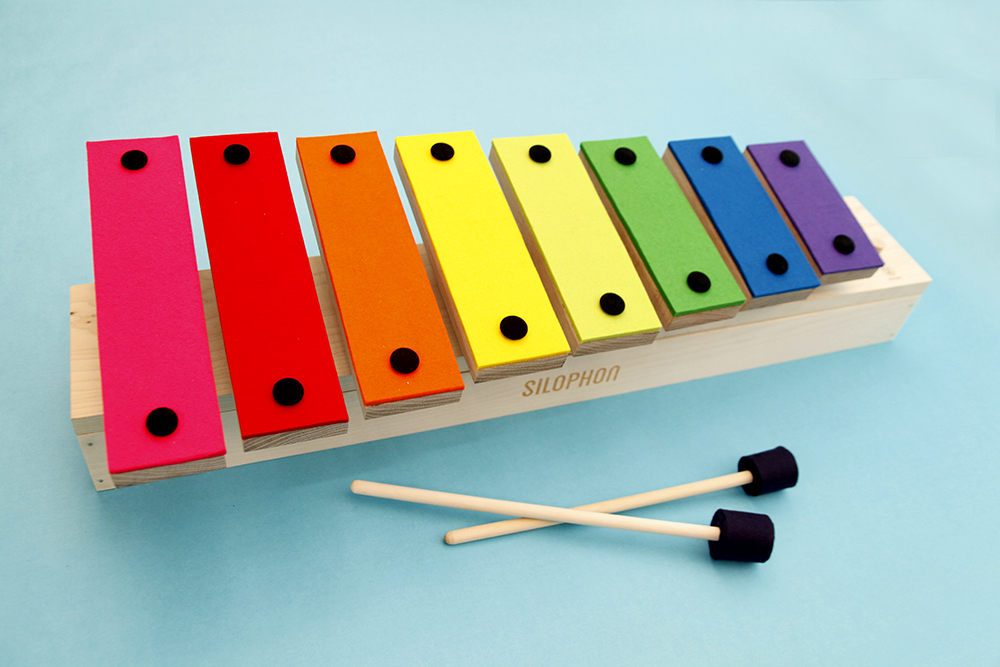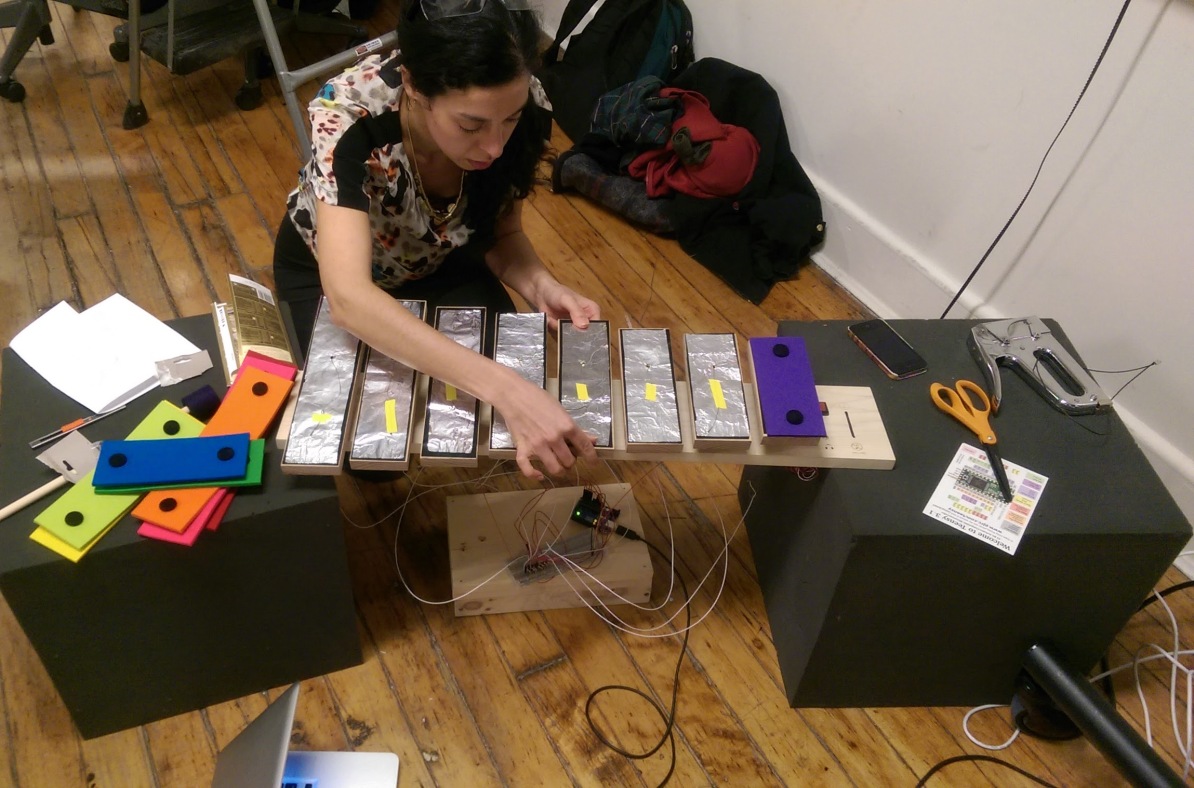All posts filed under: Physical Computing
Silophon // Week 7
This week (which was our final week working on the project!) we went through some obstacles with the sound. Along the way we had proposed various ideas to each other: How about trying to store the sound files on the Arduino Mega and playing it from there? We tried that but for some reason we were getting an awful digital sound (although the bright side was that there was some kind o communication going on). […]
Silophon // Week 6
This week we dedicated our time to working on the final fabrications of the Silophon. We were a bit OCD with our measurements (to the millimeter!) so assembling the pieces at the end kind of felt like assembling furniture from Ikea. We learned to use a lot of scary tools and how to avoid cutting fingers. Here’s a glimpse at our process in the Shop: We started out by cutting the base of our Silophon. […]
Silophon // Week 5
This week, we started building and assembling our final version of the Silophon. We started out by mapping, measuring and calculating the sizes of the different pieces we will need to build and construct. After that, we discussed the various materials we would like to use and where we should buy them. For example, we thought the mallet used for hitting the keys should probably be made of rubber and then wrapped in felt. Over […]
Silophon // Week 4
This week we setup our circuit, tested the sound and made sure our idea works. Setup How it Works R2R Resistor Ladder The resistor ladder is essentially a series of voltage divider so the input closest to the ground adds the least to the output (it’s the least significant bit), and the input closest to the output adds the most to the output (it’s the most significant bit). Here is a video demonstrating each input individually, […]
Silophon // Week 3
This past week did user testing on our prototype, and updated things like the bill of materials and the timeline for the project. We also had a wonderful meeting with Anita Perr, PhD and Clinical Associate Professor, and Kristie Koenig, Chair of the Department of Occupational Therapy at NYU. User Testing On Monday we had the chance to do some user testing is class, which was a great opportunity to see how people reacted to our project […]
Silophon // Week 2
In this week’s prototype we experimented with materials to create the physical object of the Silophon. Felt seemed to be a good material to work with for two primary reasons: Felt is a relatively soft material, hopefully encouraging children with autism to engage with it. Felt has a sound-proofing attribute, since it absorbs sound. For the prototype this week, we used foam core as a base, felt, and wooden dowels. Here’s our shopping list! (Bill […]
Silophon // First Steps
Silophon By Louis Minsky and Dalit Shalom Project idea To design a soft toy / musical instrument that is physically silent but generates sound digitally. Background It is well known that some people on the spectrum of Autism are hypersensitive to sound. The characteristic of wanting full control can be very frustrating when it comes to situations with sound where often there is no control. Traumatic experiences with sounds as a child could evidently lead to […]
Hydrate.me Electronic Coaster Select Photos
The Making of Hydrate.me Electronic Coaster
For our Physical Computing midterm, Abhishek, Songee and I paired up and designed a hydration device called Hydrate.me. The device is an electronic coaster that works by sensing the amount of liquid remaining in your bottle and providing a corresponding graphic representation. According to your timer setting, you will be reminded once every so often to drink, and when need to refill your bottle. We worked well together from the very beginning, and started out by brainstorming around […]









